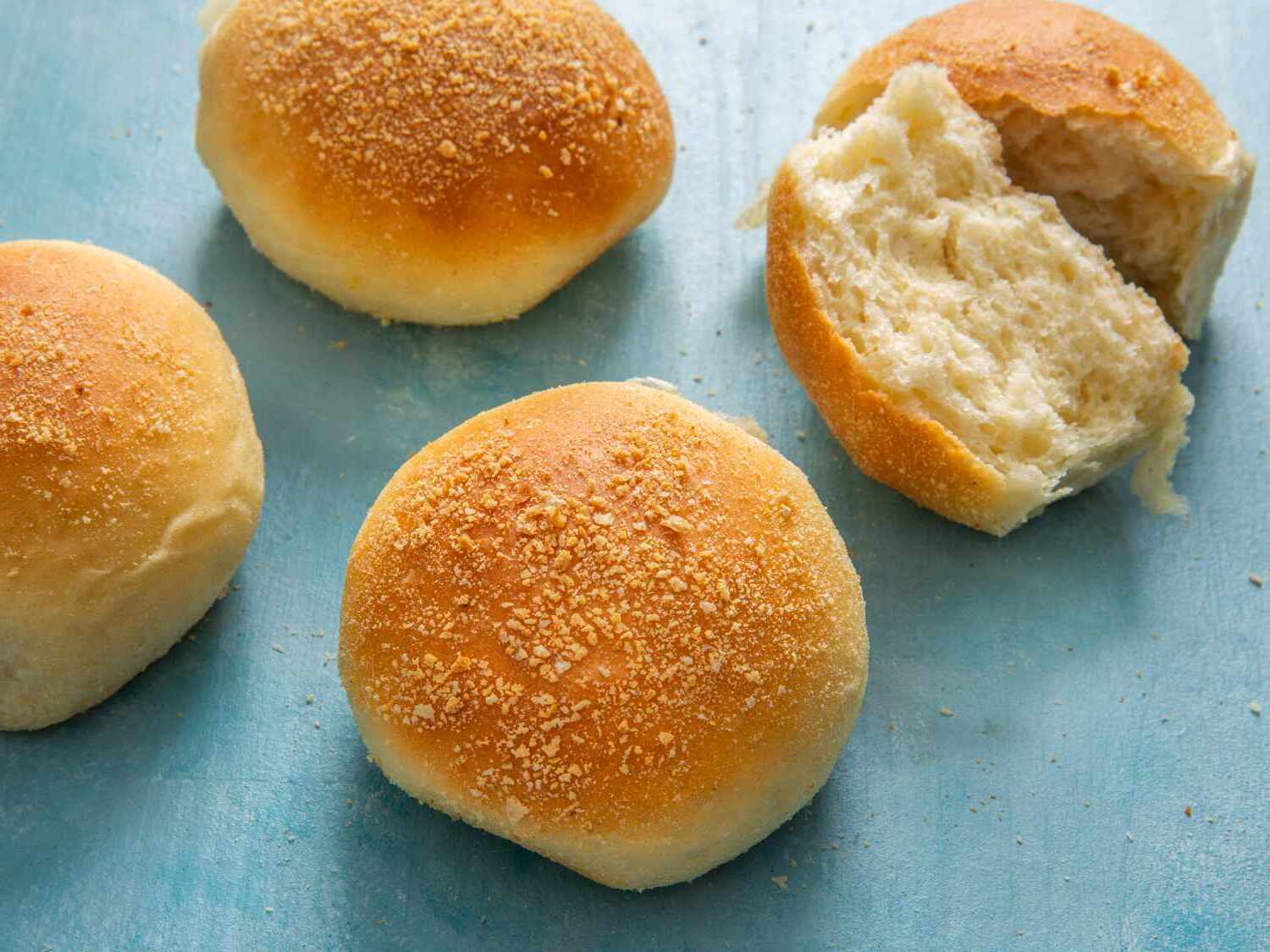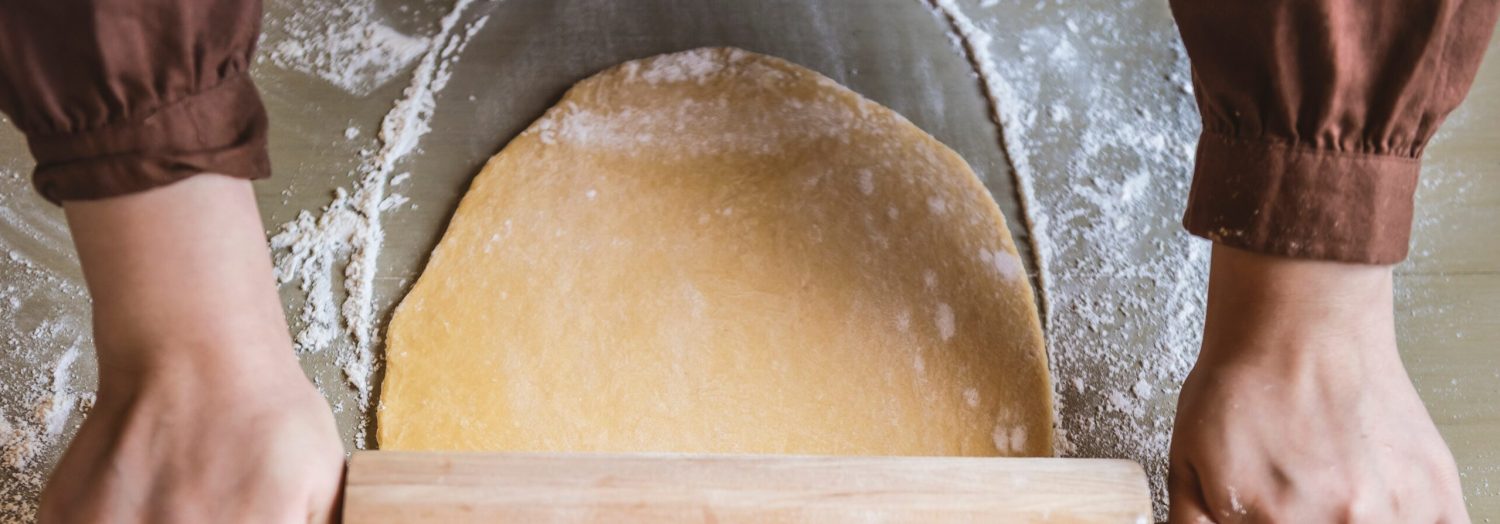Pandesal is a beloved Filipino bread roll that is slightly sweet and perfect for breakfast or a snack. Its soft, fluffy texture and golden-brown crust make it a favorite among many. This recipe will guide you through creating these delightful rolls at home.
When preparing this recipe, you might need to visit the supermarket for a few key ingredients. Active dry yeast is essential for the dough to rise properly. Bread crumbs are used to coat the dough balls before baking, giving the pandesal its signature texture. Make sure to get all-purpose flour and warm milk as well.

Ingredients for Filipino Pandesal Recipe
All-purpose flour: The main ingredient for the dough, providing structure and texture.
Warm milk: Activates the yeast and adds moisture to the dough.
Sugar: Adds sweetness and helps activate the yeast.
Butter: Adds richness and flavor to the dough.
Active dry yeast: Leavens the dough, making it rise and become fluffy.
Salt: Enhances the flavor of the bread.
Bread crumbs: Coats the dough balls, giving the pandesal its characteristic crust.
Technique Tip for Making Pandesal
When kneading the dough, use the heel of your hand to push it away from you, then fold it back over itself and give it a quarter turn. This technique helps develop the gluten structure, resulting in a smoother and more elastic dough. If the dough feels too sticky, sprinkle a little more flour on your work surface, but be careful not to add too much, as this can make the pandesal dense.
Suggested Side Dishes
Alternative Ingredients
all-purpose flour - Substitute with whole wheat flour: Whole wheat flour adds more fiber and nutrients, though it may result in a denser texture.
all-purpose flour - Substitute with gluten-free flour blend: For those with gluten intolerance, a gluten-free flour blend can be used, though the texture may vary.
warm milk - Substitute with warm almond milk: Almond milk is a dairy-free alternative that works well in baking.
warm milk - Substitute with warm soy milk: Soy milk is another dairy-free option that provides a similar consistency.
sugar - Substitute with honey: Honey adds natural sweetness and moisture, but you may need to adjust the liquid content in the recipe.
sugar - Substitute with coconut sugar: Coconut sugar has a lower glycemic index and adds a slight caramel flavor.
butter - Substitute with margarine: Margarine is a plant-based alternative that can be used in the same quantity.
butter - Substitute with coconut oil: Coconut oil provides a similar fat content and adds a subtle coconut flavor.
active dry yeast - Substitute with instant yeast: Instant yeast can be used in the same quantity and does not require proofing.
active dry yeast - Substitute with fresh yeast: Fresh yeast can be used, but you will need to use about twice the amount and dissolve it in liquid first.
salt - Substitute with sea salt: Sea salt can be used in the same quantity and offers a slightly different mineral content.
salt - Substitute with kosher salt: Kosher salt can be used, but you may need to adjust the quantity slightly due to its coarser texture.
bread crumbs - Substitute with panko bread crumbs: Panko bread crumbs provide a lighter, crunchier texture.
bread crumbs - Substitute with crushed crackers: Crushed crackers can be used as a substitute and add a different flavor profile.
Other Alternative Recipes Similar to Pandesal
How to Store or Freeze Pandesal
Allow the pandesal to cool completely at room temperature before storing. This helps prevent condensation, which can make the bread soggy.
For short-term storage, place the pandesal in an airtight container or a resealable plastic bag. Store at room temperature for up to 2 days. Ensure the container is sealed properly to maintain freshness.
If you want to keep the pandesal fresh for a longer period, consider freezing. Wrap each pandesal individually in plastic wrap or aluminum foil to prevent freezer burn and maintain its texture.
Place the individually wrapped pandesal in a large resealable freezer bag or an airtight container. Label the bag or container with the date to keep track of freshness.
Store the pandesal in the freezer for up to 3 months. This ensures they retain their flavor and texture.
When ready to enjoy, thaw the pandesal at room temperature for a few hours or overnight. For a quicker option, you can microwave each piece for about 20-30 seconds or until warm.
To restore the pandesal's crispy exterior, preheat your oven to 350°F (175°C). Place the thawed pandesal on a baking sheet and bake for 5-7 minutes, or until they regain their golden-brown crust.
Avoid refrigerating the pandesal, as this can cause the bread to dry out and become stale faster.
How to Reheat Leftovers
Oven Method:
- Preheat your oven to 350°F (175°C).
- Place the pandesal on a baking sheet.
- Lightly spritz the pandesal with water to prevent them from drying out.
- Bake for 5-7 minutes or until they are warm and slightly crispy on the outside.
Toaster Oven Method:
- Set your toaster oven to 350°F (175°C).
- Place the pandesal directly on the rack or on a small baking tray.
- Heat for 5-7 minutes until warm and slightly golden.
Microwave Method:
- Place the pandesal on a microwave-safe plate.
- Cover with a damp paper towel to keep them moist.
- Microwave on medium power for 20-30 seconds. Check and add more time if necessary, but be cautious not to overheat as it can make the pandesal chewy.
Stovetop Method:
- Heat a non-stick skillet over medium-low heat.
- Place the pandesal in the skillet and cover with a lid.
- Heat for 2-3 minutes on each side until warmed through.
Air Fryer Method:
- Preheat your air fryer to 320°F (160°C).
- Place the pandesal in the air fryer basket in a single layer.
- Heat for 3-5 minutes until warm and slightly crispy.
Steaming Method:
- Bring a pot of water to a boil and reduce to a simmer.
- Place the pandesal in a steamer basket.
- Cover and steam for 5-7 minutes until they are soft and warm.
Best Tools for This Recipe
Large mixing bowl: To combine the warm milk, sugar, and yeast, and later to mix in the other ingredients.
Measuring cups: To measure out the flour, milk, sugar, and bread crumbs accurately.
Measuring spoons: To measure the active dry yeast and salt.
Wooden spoon: To mix the ingredients together until well combined.
Floured surface: To knead the dough on, ensuring it doesn't stick.
Damp cloth: To cover the dough while it rises, keeping it moist.
Greased bowl: To place the dough in for its first rise, preventing it from sticking.
Baking sheet: To place the dough balls on for their final rise and baking.
Parchment paper: To line the baking sheet, making sure the pandesal doesn't stick.
Oven: To bake the pandesal to a golden brown.
Cooling rack: To let the pandesal cool slightly before serving.
How to Save Time on Making Pandesal
Prepare ingredients in advance: Measure and set out all ingredients before starting. This ensures a smooth workflow.
Use a stand mixer: A stand mixer can save time and effort when mixing and kneading the dough.
Warm environment: Place the dough in a warm spot to speed up the rising process.
Preheat the oven early: Start preheating the oven while the dough is rising to save time.
Divide dough efficiently: Use a kitchen scale to quickly and evenly divide the dough into equal pieces.

Filipino Pandesal Recipe
Ingredients
Main Ingredients
- 4 cups All-purpose flour
- 1 cup Warm milk
- ½ cup Sugar
- ¼ cup Butter, melted
- 1 tablespoon Active dry yeast
- 1 teaspoon Salt
- ½ cup Bread crumbs
Instructions
- 1. In a large mixing bowl, combine warm milk, sugar, and yeast. Let it sit for 5-10 minutes until frothy.
- 2. Add melted butter, salt, and 2 cups of flour. Mix until well combined.
- 3. Gradually add the remaining flour, ½ cup at a time, until a soft dough forms.
- 4. Knead the dough on a floured surface for about 10 minutes until smooth and elastic.
- 5. Place the dough in a greased bowl, cover with a damp cloth, and let it rise in a warm place for about 1 hour or until doubled in size.
- 6. Punch down the dough and divide it into 12 equal pieces. Shape each piece into a ball and roll in bread crumbs.
- 7. Place the dough balls on a baking sheet lined with parchment paper. Cover and let rise for another 30 minutes.
- 8. Preheat the oven to 375°F (190°C). Bake the pandesal for 15-20 minutes or until golden brown.
- 9. Remove from the oven and let cool slightly before serving.
Nutritional Value
Keywords
More Amazing Recipes to Try 🙂
- Ensaymada Recipe2 Hours 20 Minutes
- Braided Herb Bread Recipe50 Minutes
- Bread for the Food Processor Recipe45 Minutes
- Danish Rugbrod Rye Bread Recipe1 Hours 20 Minutes
- Fennel Corn Muffin Recipe35 Minutes
- Cream Cheese and Almond Wheat Bread Recipe1 Hours
- Irish Brown Bread Recipe55 Minutes
- Chocolate Cinnamon Roll Bread Machine Bread Recipe3 Hours 10 Minutes

Leave a Reply